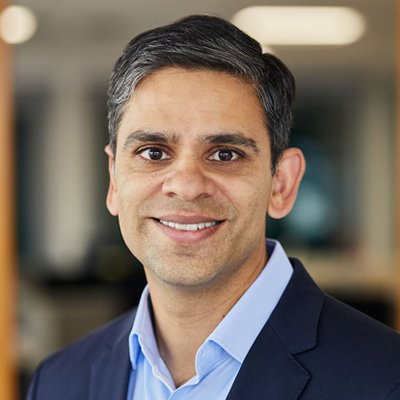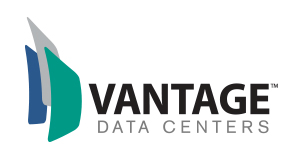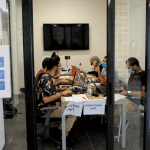

Andrew Baird
VP Marketing, TierPoint

Sureel Choksi
President & CEO,
Vantage Data Centers
Andrew Baird:
Hello, everyone. I’m Andrew Baird, VP of marketing at TierPoint. TierPoint is a member of PTC, and I am here with another PTC Member, Vantage Data Centers, and I’m speaking with Vantage’s President and CEO, Sureel Choksi. I have the privilege to ask Sureel a couple of questions before he takes the virtual stage at PTC’21. Sureel, thanks so much for joining me today.
Sureel Choksi:
Thanks for having me, Andrew. It’s a pleasure.
Let’s start with what is Vantage Data Centers and what is its primary focus?
Vantage has always been and continues to be focused on the wholesale and hyperscale segment of the data center market. We’re a company that initially started in the western United States in two markets: Santa Clara, CA and Quincy, WA. Over the course of the last four years now, we’ve expanded throughout North America, including to Northern Virginia, to Phoenix, to the Province of Quebec with facilities in Montreal as well as Quebec City. More recently with our expansion to Europe, we’ve expanded to six markets and counting given the growth opportunity we see in Europe.
In these expansions, you’ve recently acquired Hypertec’s hyperscale data center business in Montreal. What does that acquisition say about Vantage’s future?
What it says is that we continue to be focused on the hyperscale segment. We like to double down in the markets that we’re in because we see a lot of demand from our customers. What Hypertec gives us is additional hyperscale customers and expansion capacity in the form of both land and power. This allows us to continue to scale our Montreal business overtime for our entire customer base.
Vantage is growing quite quickly. How is it able to build expensive projects so quickly?
Candidly, it’s difficult to keep pace with the rate of growth that we and others have seen, particularly this year with the pandemic. There’s been a strengthening of demand with cloud adoption, and it’s clearly accelerating all around the world. There are a couple of ways that we’ve been able to hold our own, if you will. One is the number of projects we have ongoing throughout North America and Europe, and those have extensive CapEx requirements. We’ve been able to implement and now leverage a very innovative financing model on the debt side where we’ve issued debt in the securitization or ABS (asset-backed security) market. We were the first data center issuer to do so back in 2018. It’s a deep and liquid pool of capital that’s available to support long-term leases with tenants, which is what our business is. So, we’ve been able to raise capital at scale by virtue of having both good equity partners, but also leveraging the securitization market as well as some acquisition and development financing facilities.
The second way we keep up with the pace of growth is to expand our team. There is a lot of career growth opportunity within Vantage, particularly in the areas of design, engineering, and construction. We have materially ramped and continue to hire in those areas to ensure that we’re able to continue to scale the number of megawatts and buildings that we deliver across the footprint in any given year.
As someone who has been in this business for a while, where do you see the communications infrastructure industry going?
It’s been a fascinating industry to be in; there have been all kinds of change, but at the end of the day, what hasn’t changed over the last 23 years is the exponential growth in the demand for communications infrastructure. We’re seeing that demand in cloud, fiber networks, and we’re seeing it in wireless with 5G, and I think that’s going to continue.
When you think about the rocky year that we’ve had in 2020 with the pandemic and with some of the economic disruptions – obviously many industries have been hit very hard by this, and we’re all hoping for a great recovery in 2021 – the one thing that has remained constant during 2020 has been the demand for communications infrastructure. Not only has it continued its pace, but it has accelerated, and it has become even more vital for consumers and businesses. When you think about work from home environments, distance learning, and all the video conferencing that’s being done on a professional or personal basis, our industry has become more vital for these newly-formed behaviors. These changes in habit for consumers, students, and businesses are not going to simply disappear or go away entirely. These changes in behavior will continue to grow and affect our growth in the communications infrastructure industry.
Speaking of change in 2020, how has Vantage Data Centers managed during this year and during this pandemic?
It has definitely been a challenging year to navigate. On the good news side, demand has been very strong; however, that’s created a number of execution challenges on construction projects and ensuring COVID-19 risks are being managed and mitigated. We also have a brand-new European business that we launched in early February across six markets. That’s a difficult thing to do when you’re not able to travel from the U.S. to Europe. So, we were fortunate that we’ve made two acquisitions, and we’ve also been able to hire significantly in local areas.
On top of the pandemic, California has had a record year for wildfires, and we’ve actually had situations where a number of our employees have been displaced from their homes. We even had one person who lost a home. That certainly creates additional stress and pressure for the greater team. There certainly has been no shortage of challenges in 2020. I think we’re all looking forward to 2021.
Turning over to PTC’21 and the panel you’re participating in on Tuesday, 19 January, it appears you will be addressing modern technology challenges for data center providers like 5G and automation. Without giving away too much, what’s one thing that Vantage is contending with given these changes in technology?
I think the common denominator in all these new technologies is the acceleration in data, compute, network, and ultimately storage. As we think about these new technologies like AI and 5G, and as we think about the future, the challenge for us is how do we adapt and continue to accelerate our speed to market. Whether it be building the next eight megawatts in an existing data center, or whether it be standing up an entirely new campus in an existing market or in a new market, how do we move faster to be able to deliver capacity at scale, on a just-in-time basis where demand is variable. It’s one thing when you think about enterprise demand for a one-megawatt data center requirement. That’s a very stable and well-understood level of demand. But when you don’t know whether you need to be able to serve that particular emerging customer or technology with one megawatt or potentially 10 megawatts six months from now, or maybe an even bigger number 12 months from now, how do you plan, and where do you make investments, or how do you work your supply chain to be in a position where you can react to that demand as and when it comes, and be able to deliver on a timely basis? That’s a big challenge we’ll have for many years to come.
Companies like Vantage and TierPoint are PTC Members, and we know the value it gives us. How long have you participated with the organization and its Annual Conference in Honolulu?
I started going to PTC about 15 years ago when I was at Level 3 Communications. At the time, PTC was primarily focused on telecommunications and fiber. After a couple of years with Vantage, I saw PTC change and diversify in a meaningful way, with a larger presence and focus on cloud and data centers, which are, of course, of interest to us. So, I’ve been going every year. I’m participating virtually this year, and I’m very much looking forward to next year being in Hawaii and meeting with you and many other friends and colleagues throughout the industry.
What are you, Sureel, looking forward to most in 2021?
I’m looking forward to spending less time on Microsoft Teams and Zoom, as great as they are, and spending more time in person with colleagues and customers. I think a lot of people I’ve talked to have been pleasantly surprised by how productive we’ve all been during the pandemic without being in person, but with that said, I think there’s something we’re missing when we’re not in person.








